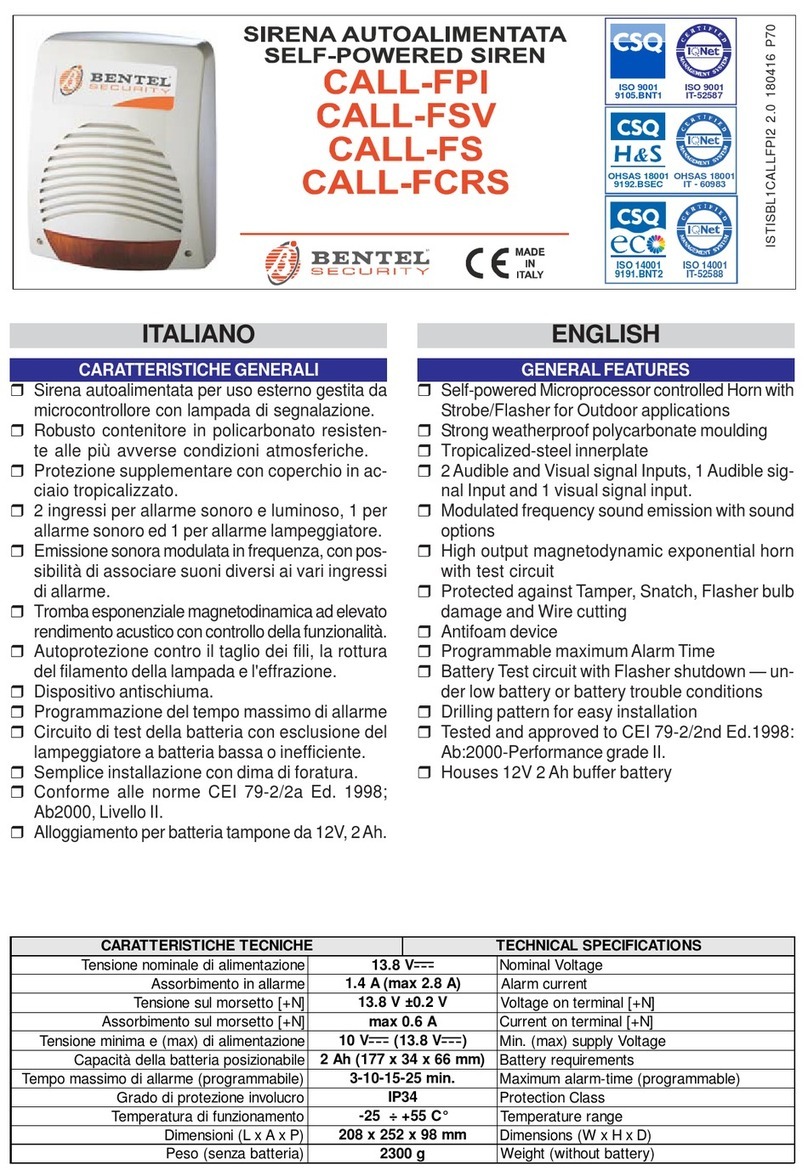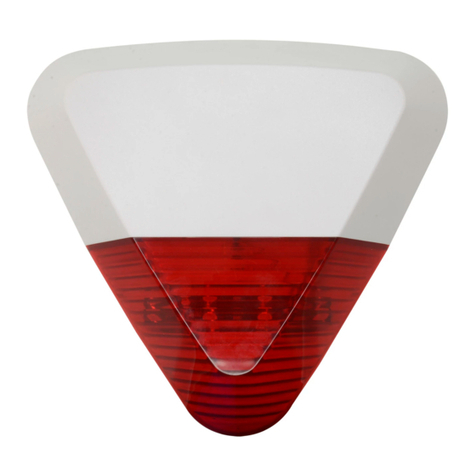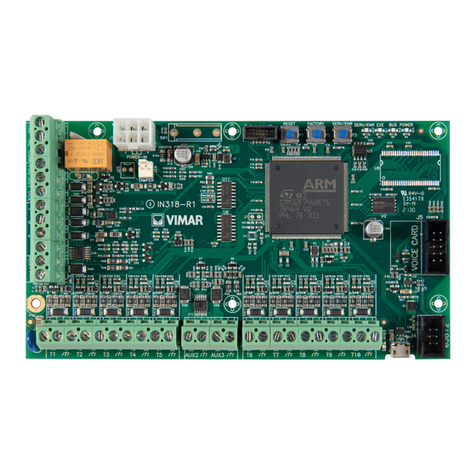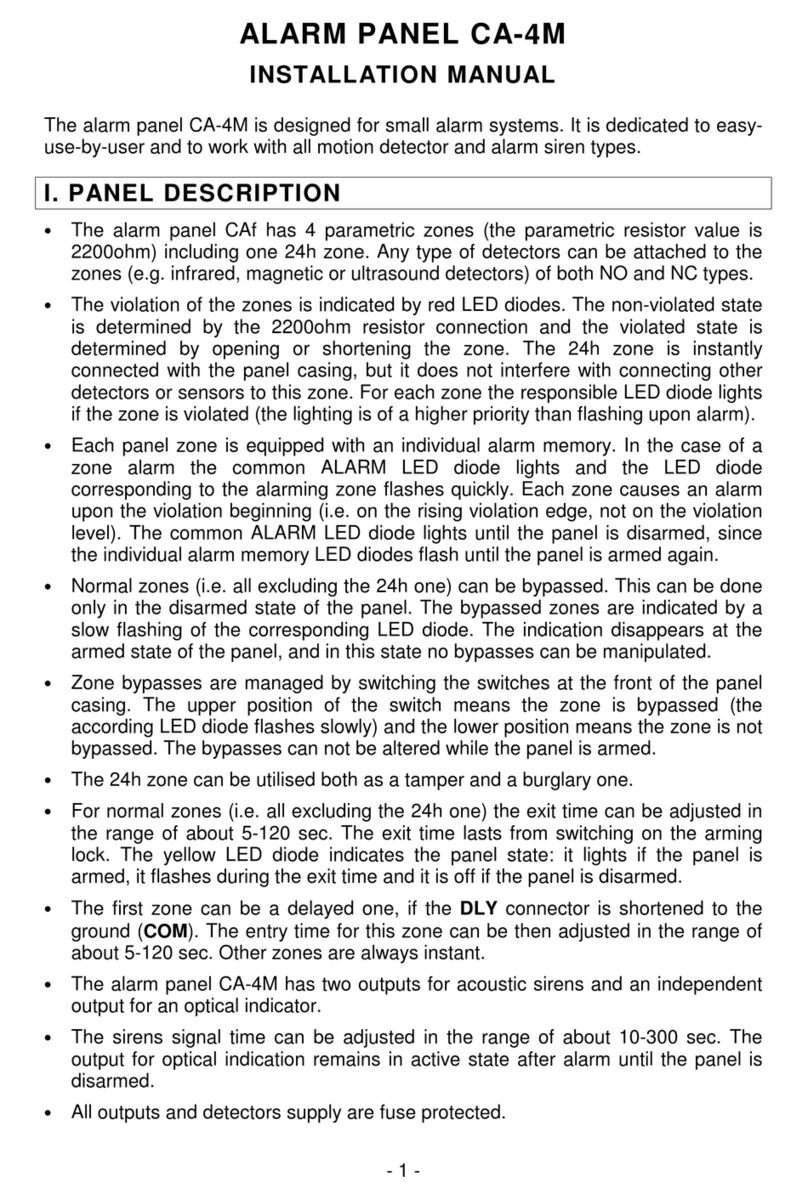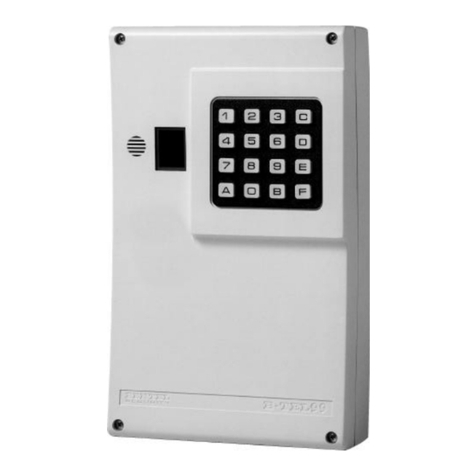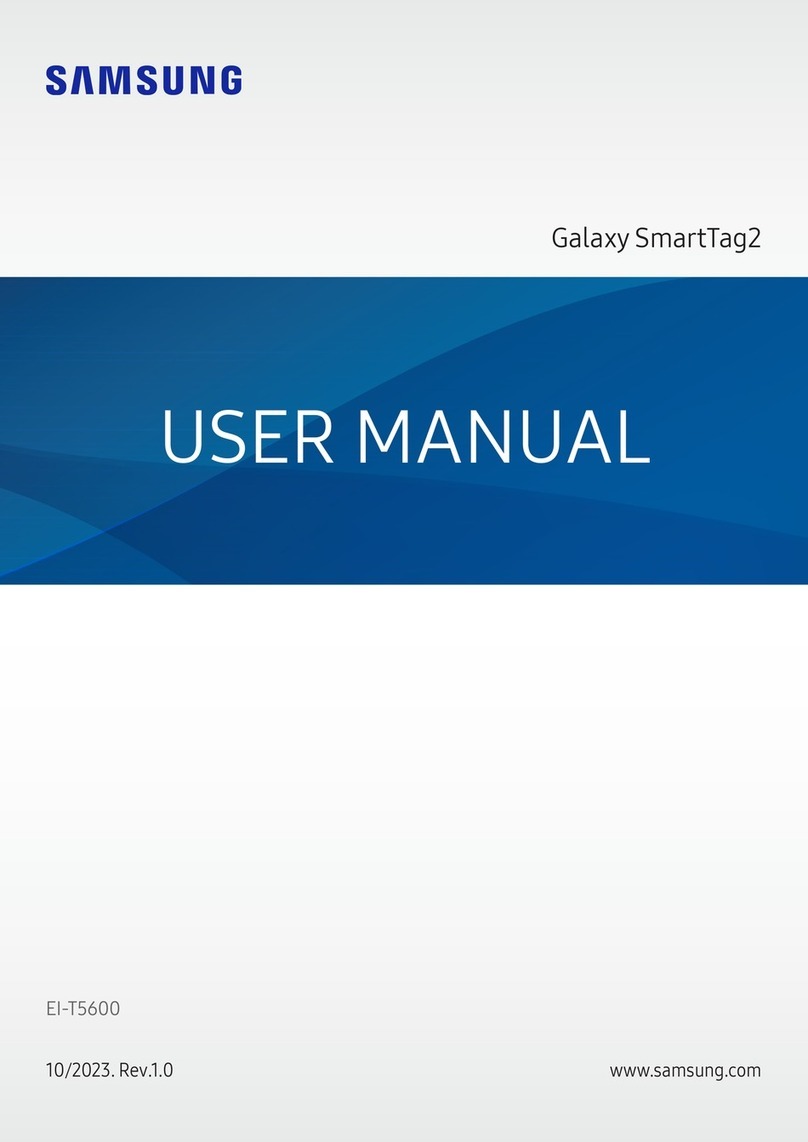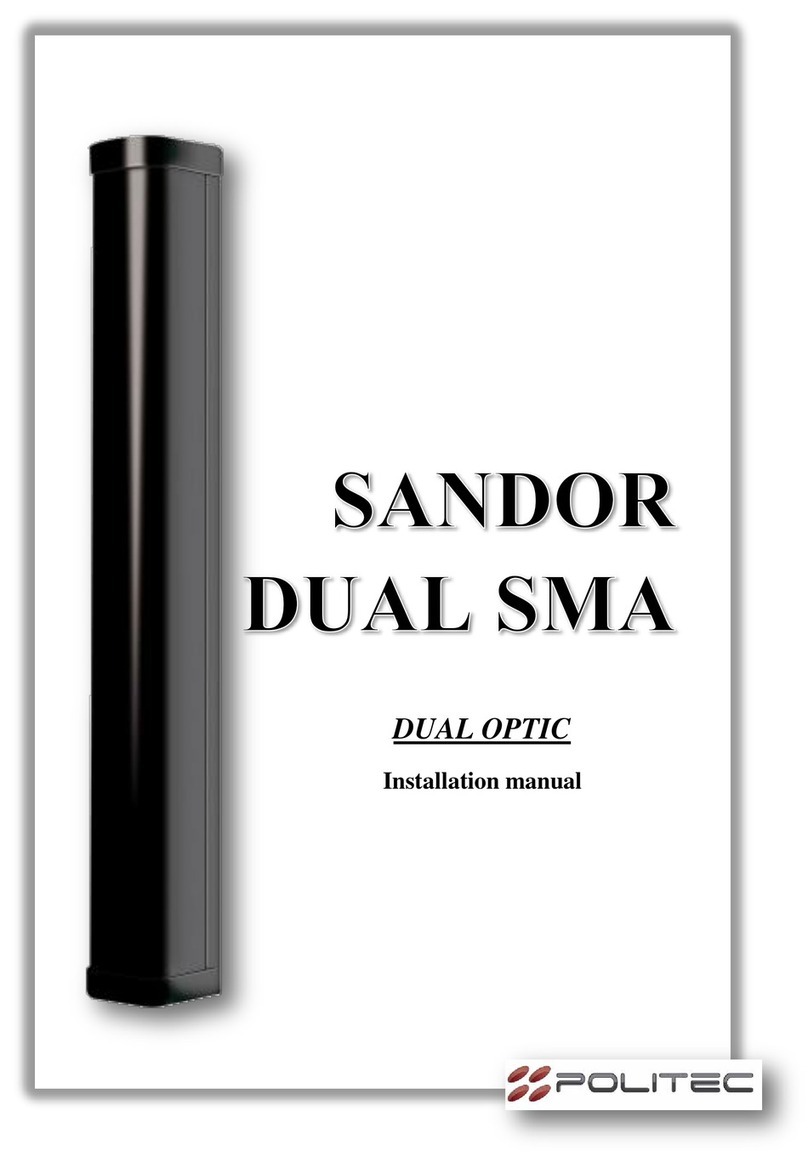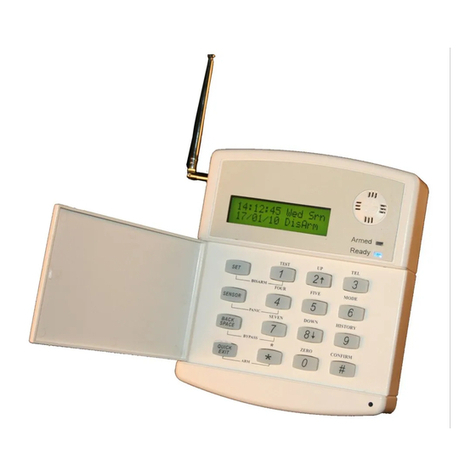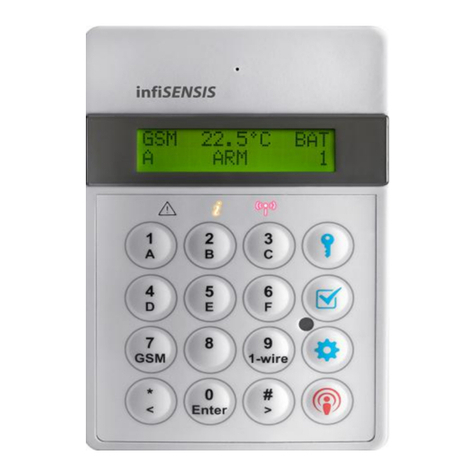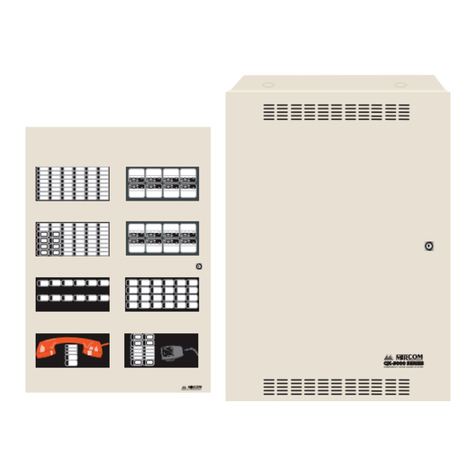FIRETRACE FTILPINTHTBI User manual

Operating Manual:
Firetrace®Indirect Low
Pressure Integrated High
Throughput Bi-Directional
Fire Suppression System for
Engine Compartment
Please read this manual thoroughly before carrying out the
installation of this system
Firetrace®systems shall only be installed by trained engineers
FIRETRACE
AUTOMATIC FIRE SUPPRESSION SYSTEMS
LTD
®

Page | 1
CONTENTS
Section Description PAGE
1 Introduction________________________________________________ 2
Safety Precautions___________________________________________ 2
2 System overview____________________________________________ 3-4
ABC Dry Chemical Extinguishing Agent___________________________ 4
3 System Design and Limitations_________________________________ 5
Storage and Operating Temperatures________________________ 5
System Operating Pressure________________________________ 5
Nozzle and Discharge Pipe Requirements_____________________ 6
Discharge Piping and Fitting Specifications____________________ 6
Firetrace Detection/Actuating/Discharge Tubing_______________ 6
4 Firetrace Installation Instructions________________________________ 7
Cylinder/Valve and Bracket Assemblies_______________________ 7
Discharge Piping and Nozzles_______________________________ 8
Discharge Line Tees and Angles_____________________________ 8
Firetrace Detection/Actuation/Discharge Tubing_______________ 9-10
Connecting the Firetrace® Tubing onto Fittings________________ 11
Commissioning Instructions________________________________ 12
5 Service and Maintenance Instructions_____________________________ 13
Service and Maintenance for ABC Dry Chemical Systems__________13
Annual Servicing for FTILPINTHBIV Systems____________________ 13
6 System Component List________________________________________ 14
Detection Line Parts List___________________________________ 15
Discharge Line Parts List___________________________________ 16

Page | 2
1 - Introduction
This manual is written for the fire protection professional that designs, installs and maintains Firetrace Ltd Indirect
Low Pressure Integrated High-Throughput Bi-Directional system, this system must be designed, installed,
inspected, tested, maintained, and recharged by a competent and trained engineer.
Safety Precautions
The following safety precautions must always be followed
•Read and understand this Manual and the other documents referenced herein.
•The valve discharge ports must be sealed with the plugs provided at all times and only removed when the
system is connected into the discharge pipeline.
•PPE suitable to the local environment shall be worn when installing a Firetrace® System. Wear safety
glasses when working with pressurised cylinders and charging equipment.
•Make sure the Integrated Ball Valve (accessed by removing the top gauge of the cylinder valve) is in the
closed (horizontal) position, the safety caps have been installed, and the detection tubing has been
removed from the cylinder valve, before removing the cylinder from the installation and before
performing any servicing, leak tests or system changing.
•Follow all the safety procedures included on the cylinder labels and within this manual.
•Never assume that a cylinder is empty. Treat all cylinders as if they are fully charged.
Any questions concerning the information contained within this manual shall be addressed to:
Firetrace® Ltd
Unit 22-24 Knightsdale Road
Ipswich
Suffolk
IP1 4JJ
Telephone: 01473 744090
Fax: 01473 744901

Page | 3
2 - System Overview
The Firetrace Indirect Low Pressure Integrated High Throughput Bi-Directional (FTILPINTHTBI) Fire Suppression System
is designed for local applications within engine areas using ABC Dry Powder. In addition to the main engine
compartment the system can also be extended to cover adjacent battery / hydraulic compartments
Other Firetrace systems are available for the bespoke protection of remote electrical voids.
The System uses linear heat detection tubing that can detect a fire, or a temperature above that of normal operation.
The tubing offers detection along its entire length ensuring fast and accurate activation throughout the risk areas. In
addition to the discharge nozzles the Firetrace system also uses patented “bi-directional” technology. This means that
a percentage of the extinguishant is deployed directly from the activation burst hole ensuring that it immediately
tackles the source of ignition. This unique function provides the ability to protect small or concealed areas without
the need for additional diffusers.
Using high quality ABC Dry powder, the system is compatible with all potential fire classes including, diesel, electrical,
Hybrid, Hydrogen and CNG.
The Firetrace system is designed to cover all principal risk areas within the engine compartment and the nozzle
placement ensures that extinguishant is deployed over all identified hazards. The additional benefit of deployment
from the tubing burst means that all areas are covered even if they were not initially identified as a primary risk.
The Firetrace system operates pneumatically and does not require energy from the vehicle nor operator to operate.
Each installed system is equipped with detection tubing, discharge piping, and nozzles. The pre-designed concept
minimizes the amount of engineering involved in the application design. When the discharge piping and nozzles are
installed within the limitations stated in this Manual, no hydraulic calculations are required to determine pressure
drop, agent flow, or discharge time.
The hazard being protected can be any size, shape, or volume provided that the hazard being protected is within the
limitations described in this Manual. When installed, each extinguisher is a self-contained unit, meaning that it is
equipped with its own automatic (non-electric) detection system. This system, when actuated, automatically releases
the suppression agent into the hazard area.
These extinguisher units can be combined to protect a larger size hazard, and can be simultaneously actuated or a
delayed discharge can be incorporated.
Upon actuation, an optional pressure switch can be used to indicate discharge, shutdown ventilation, close all
openings, shut-off electrical power, etc. as may be required.
Dry powder is stored in a steel cylinder pressurized with nitrogen to 12bar at 21°C (174psig at 68°F). Each cylinder is
equipped with a straight dip tube and must only be mounted in a vertical (upright) position.
Each cylinder is equipped with a plated brass valve, a pressure gauge to monitor cylinder pressure, an integrated
quarter turn ball valve with pressure gauge to monitor Firetrace® tubing pressure with an optional status indicator
module (SIMI). The integrated ball valve must be kept in closed position at all times when the cylinder is not in service.
The system utilizes Firetrace flexible tubing that is attached to the top of the cylinder valve. This tubing is pressurised
with nitrogen to maintain the cylinder valve in the closed position. This tubing acts as a continuous linear thermal
detector that ruptures to create a diffuser upon direct flame impingement or at high temperatures associated with
fire conditions. Once the detection tubing is ruptured, the cylinder valve automatically opens, allowing the dry powder
to flow through the discharge piping and through the Firetrace tubing, distributing the extinguishing agent through
the nozzles into the protected area.

Page | 4
Firetrace® FTILPINTHTBI Systems consist of the following major components:
1. Cylinder/Valve Assembly
2. Cylinder Mounting Bracket
3. Firetrace detection/actuating/discharge tubing and fittings
4. Discharge Nozzles
5. Pressure Switch (Optional)
6. Discharge piping and Fittings
For a more comprehensive list of technical illustrations and part numbers, please see section 6.
ABC Dry Powder Extinguishing Agent
ABC dry powder has been treated to be water repellent and capable of being fluidized and free flowing so that it can
be discharged through hoses and piping under the influence of an expellant gas. When discharged, dry powder will
drift through the air and settle on surrounding surfaces.
Following a discharge, the exposed areas must be cleaned off within 24 hours. Dry powder can be cleaned up by one
of the following methods; wiping, vacuuming, blowing off with an airline or pressure washing the exposed areas. In
some cases, the powder can be scraped off a surface if that surface was hot at the time of discharge.
For hazard information, decomposition information, and physical properties of ABC Powder please refer to the
Material Safety Data sheet included with this manual.
Agent Discharges via
Separate Nozzles
A Percentage of Agent
Discharges via Detection Tubing
Figure 1: System Overview Diagram

Page | 5
3 - System Design and Limitations
The FTILPINTHTBI Fire Suppression System design limitations were established and tested by Firetrace Ltd. The units
are certified by SP Technical Institute of Sweden.
These units were subjected to numerous performance tests to verify their suitability and to establish design limitations
for:
7. Hazard Volume
8. Operating Temperature Range
9. Nozzle Placement
10. Nozzle Quantity
11. Maximum Length/Size of Piping and Number of Fittings
Firetrace systems are pre-designed to minimise the amount on engineering required when evaluating a design for
specific application. As long the discharge piping, nozzles and Firetrace tubing is installed within the limits prescribed
in this manual then no further calculations are required for pressure drop, flow rates, or discharge time. When any
additional limitations to hazard volume, area coverage, maximum height, design concentration, agent quantity,
detector arrangement, etc., are also met, the system installation can be understood to comply with the design
requirements. Therefore, no discharge tests or concentration measurements should be required.
Storage and Operating Temperatures
Firetrace® cylinders are designed to be stored and operated at the ambient temperature range of
-20°C and +60°C (-4°F and +140°F)
System Operating Pressure
The normal operating pressure for Firetrace® Systems is 12bar at 20°C (174psig at 68°F).
All Firetrace® systems are designed for an operating temperature range of -20°C to +60°C. Table 1 shows the cylinder
gauge pressure-temperature relationship based on a charging pressure of 12bar at 20°C.
Cylinder Pressure
°C
°F
bar
psig
-20
-4
10.2
148.2
-10
14
10.6
154.7
0
32
11.1
161.1
10
50
11.5
167.5
20
68
12
174
30
86
12.4
180.4
40
104
12.9
186.9
50
122
13.3
193.3
60
140
13.8
199.8
Table 1: Cylinder Pressure-Temperature Relationship

Page | 6
Nozzle and Discharge Pipe Requirements
Specially designed High Throughput Powder Diffusers are used with the FTILPINTHTBI System, this type of nozzle
decreases discharge time and increases the spread of dry powder. The baseline engine compartment must be
designed using at least 3 nozzles to suit hazard configuration of a 4m3 engine compartment.
A standard nozzle layout would include nozzles being installed at the top of the engine compartment roof facing
downwards in a pendant position. One nozzle shall be located above the exhaust manifold in the region where oil is
most likely to spill. Another nozzle shall be in the region of prominent hazards.
Each cylinder valve is equipped with 3 discharge ports (DP). All three discharge ports are to be used onto the engine
compartment.
Discharge Piping Specifications
FTILPINTHTBI Systems shall use flexible discharge hoses for the ABC Dry Chemical distribution system. The following
tubing shall be used;
Hose
Fittings
Nominal
Braid
Dia(mm)
Nominal
Hose
O.D.(mm)
Max. Working
Pressure
Min Burst
Pressure
Min. Bend
Radius
Weight
Kg/m
Bar
PSI
Bar
PSI
mm
IN”
3/8”
15.3
17.4
180
2610
720
10440
130
5.118
0.337
Liner: Synthetic oil resistant rubber
Reinforcement: One high tensile steel wire braid
Cover: Anti-Abrasive synthetic rubber, resistant to oils, fuels and atmospheric conditions
Working Temp: -40°C to 135°C (-40°F to 275°F)
Intermittent Temp: 40°C to 140°C (-40°F to 284°F)
Firetrace Detection/Actuating/Discharge Tubing
For the FTILPINTHTBI System, the Firetrace® tubing is used as a combination for heat detection, system activation
and system discharge.
The detection/actuation/discharge tubing is heat sensitive and in a fire situation is designed to rupture at any point
along the tube upon direct flame impingement or at high temperatures associated with fire conditions. The Firetrace®
detection tubing will burst when subjected to temperatures above 120°C (248°F) and form a diffuser where a
percentage of the Dry powder will be deployed.
The maximum length of Firetrace® detection tubing that can be used for FTILPINTHTBI Systems is 20m.

Page | 7
4 - Firetrace Installation Instructions
This section provides installation instructions covering components and limitations described in Section 2 and Section
3 of this manual.
All components shall be installed to facilitate proper inspection, testing, recharging, and any other required service or
maintenance as may be necessary. Equipment must not be subjected to severe weather conditions or mechanical,
chemical, or other damage which could render the equipment inoperative. The equipment must be installed in
accordance with instructions in this Manual.
Cylinder/Valve and Bracket Assemblies
Cylinders shall be located as close as possible to the protected enclosure. In some cases, the cylinder can be mounted
inside the protected enclosure. The assemblies shall be located in a readily accessible location to allow for ease of
inspection, service, and maintenance. The cylinders shall be located in an environment protected from the weather
and where the temperature range is between -20°C and +60°C (-4°F and +140°F).
The cylinder and bracket shall be mounted in the vertical plane and in no circumstance, must the cylinder be
positioned at an angle of more than 45° from vertical. The cylinder valve must be facing up and oriented so that the
pressure gauge is facing out and away from the mounting wall to facilitate visual inspection.
Mount the cylinder where it will not be subjected to accidental damage or movement. Suitable protection must be
installed where necessary to prevent damage or movement.
1. Securely mount the cylinder bracket to structural support using 4 or more mounting holes.
2. Position the cylinder in the bracket with the cylinder pressure gauge facing out. Secure the cylinder in
place using the bracket latch.
45°
It is recommended wherever possible that
Firetrace cylinders be mounted vertically.
Where vertical positioning is not possible the
system can be mounted within 45° of vertical.
Firetrace Dry Powder Systems are not suitable for horizontal mounting

Page | 8
Discharge Piping and Nozzles
1. It is advised that a risk assessment is be carried out to determine appropriate discharge pipework and
nozzle positioning.
2. Locate the nozzle(s) placement once a risk assessment has been carried out, ensuring design is within
limitations and guidelines described in section 3.
3. Determine the routing of the discharge piping and verify that the pipe length from each discharge port
does not exceed limitations and guidelines described in section 3.
4. Remove the safety fittings from the valve discharge ports as required. Secure the male 3/8 BSP fittings
into each discharge port.
5. Install the discharge piping and fittings between the cylinder and nozzle(s). Secure pipework with the
appropriate fittings as required.
For a more comprehensive list of Discharge Pipe Fittings, refer to section 6
Discharge Line Tees and Angles
Changes in direction of flow cause separation of expellant gas and dry chemical. To provide proper distribution of dry
chemical when using a tee fitting special attention must be given to the method in which an approach is made after a
change in direction. A single tee fitting shall be used per discharge piping.

Page | 9
Firetrace® Detection/Actuation/Discharge Tubing
The Firetrace® Automatic Detection tubing is the key part of the system and acts not only as the detector, actuator
but also as the delivery method for a percentage of the ABC Powder.
The correct installation of the tubing is important to achieve optimum performance from the system. The tubing must
be mechanically protected outside the identified risk area and shall remain accessible to allow future servicing.
The tubing will activate at approximately 120°C and care must be taken to avoid attaching the tubing where
temperatures above this are achieved during normal operation. It is recommended that the tube is a minimum of
150mm away from exceptionally hot surfaces or fitted with additional protection to avoid false activation.
The tubing shall be placed as close as possible to high risk areas as long as they do not reach ambient temperature
higher than 120°C (248°F). For example, a minimum distance from a turbo charger shall be 150mm (6 inches) to
avoid premature tubing activation. See diagram below for a Firetrace detection tubing installation example.
CAUTIO
•The Firetrace® detection tubing needs to be adequately fixed to retain its position.
•The tubing is a soft polymer and is susceptible to wear / chaffing when repeatedly rubbed against a hard or
sharp surface.
•The tubing shall be protected using nylon Kopex at all fixing points and where it passes through holes.
•The Firetrace® tubing acts as the detector, actuator and provides delivery for a percentage of the
extinguishant. It is imperative that the tubing is not kinked or crushed and the above minimum bending
radius must be adhered to.
•If the tubing is kinked or damaged in anyway then the Firetrace® tubing in that section must be replaced.
Figure 5: Minimum and Optimum Bend Radius
Minimum Bend Radius
80mm
Optimum Bend Radius
150mm

Page | 10
•It is important that the detection tubing is exposed within the risk area. Kopex or other conduit sleeves shall
be kept to a minimum length (approx. 15mm (0.6”) either side of fixings) or where the tubing comes into
contact with other surfaces.
•Always leave a small loop of tubing to the cylinder. Whilst this shall also be secured it must be releasable to
allow future servicing of the cylinder.
•It is important that fixings are not concealed as access is required during future servicing. When systems are
installed during construction of the vehicle care should be taken not to fix the tubing anywhere that will not
be accessible following installation of the engine & body parts.
The following models show both “Tyrap” and “P clip” methods of fixing all of which are acceptable:
8mm Firetrace Tubing shall be supported at maximum intervals of 200mm
When the tubing is installed with a group of other cables/pipes it must be positioned on the underside of the loom
and must never be located within the centre of the loom

Page | 11
Connecting the Firetrace® Tubing to fittings
All compression fittings must be secured in the following manner.
a) Cut the tube end ensuring the cut is clean and free from burrs. Check that no debris or swarf has been left
in the tube.
b) Place the nut over the end of the tube with its threaded section towards the end you wish to create the
flare on.
c) Push the tube firmly over the flaring tool ensuring the end of the tube bottoms. Be careful not to kink the
tube during this process.
d) The nut shall be tightened finger tight and then using an appropriate spanner tightened firmly using only
your hands, over tightening can crush the flare.
e) Slacken off the assembly and inspect the end to ensure flare has formed correctly, this flare can now be
used to connect the tube to the system
Method used to create Flare
1. Tubing must be cut square.
The use of a Tube Cutter (Part Number: FT0127) is recommended to achieve an accurate cut
2. Insert tubing through the spring nut/nut.
3. Offer the tubing to the flaring tool, so that the end of the tube stops against the face of the flaring tool,
tighten the nut hand tight.
4. Whilst holding the flaring tool handle, use an appropriate size spanner (14mm spanner for 8mm tube)
tighten the nut spanner tight, the recommended torque is 5.7nm.
5. Undo the nut and inspect the end to ensure the flare has formed correctly. The tubing is now ready to be
connected to the system.
Visual representation of ideal flare.
For a more comprehensive list of Firetrace® Tube Fittings, refer to section 6

Page | 12
Commissioning Instructions.
Locate cylinder and firmly secure with the bracket provided as specified in section 4.
Install detection tubing, discharge pipework and any accessories according to the procedure in section 4.
Remove black transportation cap from the top of the cylinder. Connect the Firetrace® detection tubing to the
top of the cylinder valve, tighten spring nut/nut using the appropriate sized spanner then secure the Firetrace®
detection tube with appropriate methods of fastening.
Remove the gauge from the top section of the cylinder
valve, this reveals the integrated ballvalve which will
be in the off position (horizontal position).
A regulator and calibrated pressure gauge shall be
used to pressurise the detection tubing with dry
nitrogen through the filling adapter (FT0172),
pressurise to 12bar (174psi)
It is recommended to have a portable dry nitrogen
cylinder or Firetrace Nitrogen Fill Kit (FSCK) for on-site
use.
Remove the filling adapter and thread the pressure gauge & o-ring into its place to verify that
the tubing is pressurised to at least 12bar (174psi)
(pressure may have to be adjusted for temperatures higher or lower than 20°C (68°F)).
Using tape, mark the location of the needle on the pressure gauge (High Green) and leave
system for a minimum of ten minutes per metre of Trace detection tube.
In the event of a leak go back to section 4 and check the installation of all fittings and
accessories
If the ball valve is opened abruptly, activation of the cylinder valve may occur, causing the system to discharge.
After confirming that there is no leakage within the detection tubing, remove the gauge from the top section of
the cylinder valve and using the key provided SLOWLY rotate the ball valve counter clockwise to the “ON”
position (vertical position)
The system is now live
An optional Pressure Switch Adapter can be fitted in either gauge adapters otherwise the gauges can be
returned.
Please note that the system will not operate with the isolator valve in the closed position, an optional status
indicator module (FTSIMI) can be used to determine whether the valve is isolated or activated.

Page | 13
Service and Maintenance for ABC Dry Chemical Systems
The Firetrace® systems can operate in a harsh environment and are occasionally subjected to high temperatures and
extreme vibration. It is essential that the systems are regularly serviced to ensure their correct operation.
To comply with British Standard BS 5306 (section three) the following maintenance tasks shall be carried out
periodically.
The British standard recommends that each system is visually inspected every 3 months and then fully serviced at a
maximum interval as specified by the manufacturer.
All ABC Dry Powder systems require discharge testing at maximum 5 year intervals.
The following checks shall be carried out on a 3 month inspection.
•Check the pressure gauge is reading high-green.
•Ensure physical changes of protected areas haven’t affected cylinder suitability.
•Check external surface of the cylinder for evidence of rust or corrosion
•Report any potential problems immediately.
In the event of activation of the system, a replacement should be obtained from Firetrace® Ltd
Firetrace® Ltd recommends a visual inspection of a Firetrace® system at least every three months.
Firetrace Ltd recommends that all powder systems are fully serviced every
6 Months by a competent engineer.
If there’s no visible sign of pressure drop then;
✓Check date of manufacture and record when discharge test is required (5 years from new date on cylinder).
✓Check external condition of cylinder. Replace if there is any sign of damage or wear.
✓Check gauge is facing upwards (if applicable) and that cylinder is installed as upright as possible. Where necessary
reposition cylinder, or highlight any required modifications for return visit.
✓Remove cylinder gauge and ensure correct operation. Clean and lubricate O ring and refit the gauge.
(Due to possible pressure seepage, the gauge must be replaced as soon as possible.)
✓Remove pressure switch (if applicable) and ensure correct operation. Clean and lubricate pressure switch O ring and
refit switch.
(Due to possible pressure seepage, the pressure switch must be replaced as soon as possible.)
✓Remove Cylinder from bracket and agitate powder contents. (Cylinder shall be inverted to achieve this. A noticeable
movement of the contents will be apparent. A rubber mallet can be utilised to achieve this.)
✓Inspect engine compartment and ensure Firetrace® detection tubing is correctly installed and protecting entire risk
area. Check for signs of wear/damage and tighten or replace fixings as necessary.
✓Record details and date of service on cylinder label. Replace cylinder into bracket and ensure it is secured by clamp /
Tyrap.
If there is notable sign of pressure drop then the system must be replaced

Page | 14
System Component List
ITEM NO.
PART NO.
DESCRIPTION
1
FTILPINTHBIV
Indirect Low Pressure High-Throughput
Integrated Bi-Directional Valve
2
FT0438/6-HT
Diptube High-Throughput 426mm White
3
FT0133-P
Steel Cylinder 6kg/Litre with ABC Powder
4
FT0150
6kg Bracket with Stainless Steel Strap
5
FTILPINTHTBI/8
ILP High-Throughput Bi-Directional M18x1 Plug
6
FT1511-8/6-1/8-S
1/8” BSP Fitting for 8mm
7
FT0322/8
Plastic Black Cap for 8mm
8
FTSIMI
Optional Status Indicator Module
1
2
3
4
8
5
6
7

Page | 15
Detection Line Parts List
PART NUMBER
DESCRIPTION
FT1511-8/6-1/8S
Male-Tube/Trace 8mm Trace 1/8” Male – 8mm Special
FT1723-8/6-SS
Anti-Kink Spring Nut 8mm Stainless Steel
FT0269/1/M
Banjo Tee Assembly for Valve Male
FT0118/8
End of Line –12bar 8mm (optional)
FT0253/8
8mm Blank/Stop End
FT0253/8
FT1511-8/6-1/8-S
FT1723-8/6-SS
FT0118/8
FT0269/1/M

Page | 16
Discharge Line Parts List
PART NUMBER
DESCRIPTION
FTILPINTHTBI/8
ILP High-Throughput Bi-Directional M18x1 Plug
FT0284/HT
High-Throughput Diffuser 3/8” BSP
FTILPINTHTBI/11
ILP High-Throughput Bi-Directional Valve M18x1 –3/8” Adapter
FT0260/11
1m 3/8” Flexi Hose 90° Female to Straight Female
FT0260/12
3m 3/8” Flexi Hose 90° Female to Straight Female
FT0260/13
4m 3/8” Flexi Hose 90° Female to Straight Female
FT1210-10
3/8” Tee 10mm 10mm-10mm
FT1210-10
FTILPINTHTBI/8
FTILPINTHTBI/11
FT0284/HT
FT0260/11 - FT0260/12 - FT0260/13

Page | 17

Page | 18

Page | 19
Table of contents
Popular Security System manuals by other brands
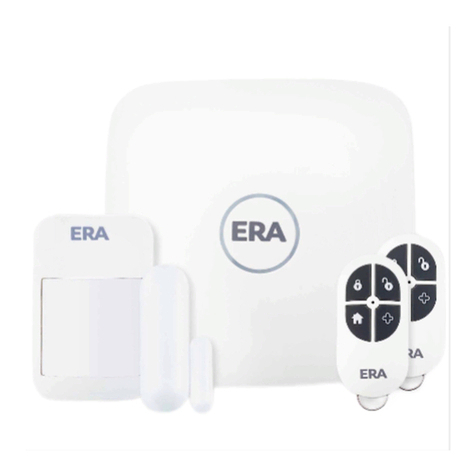
ERA
ERA Protect quick start guide
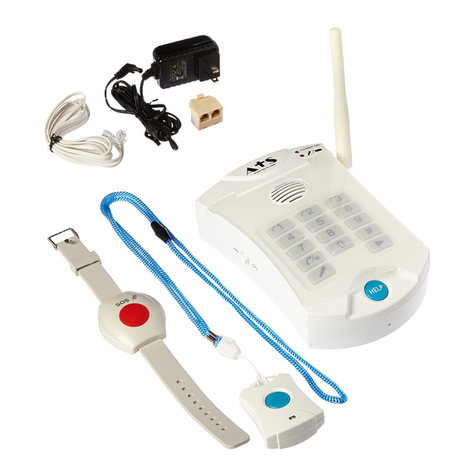
Assistive Technology Services
Assistive Technology Services SERVICE ANIMAL ALERT manual
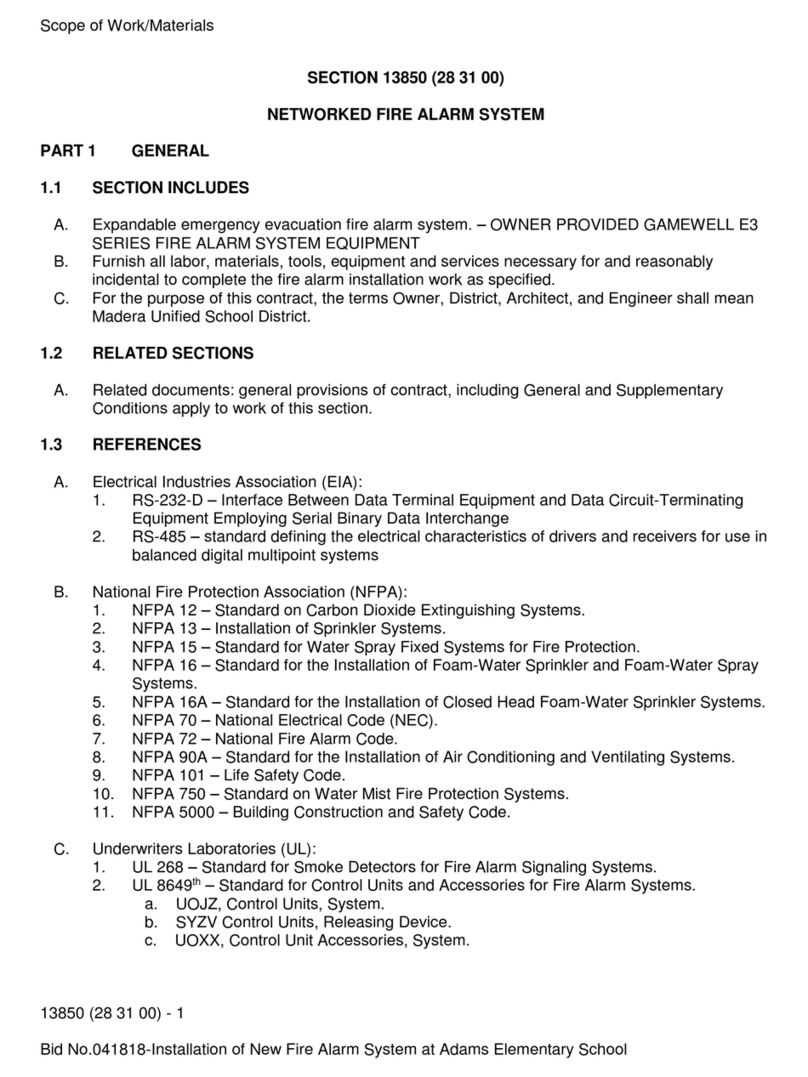
Gamewell
Gamewell E3 Series manual
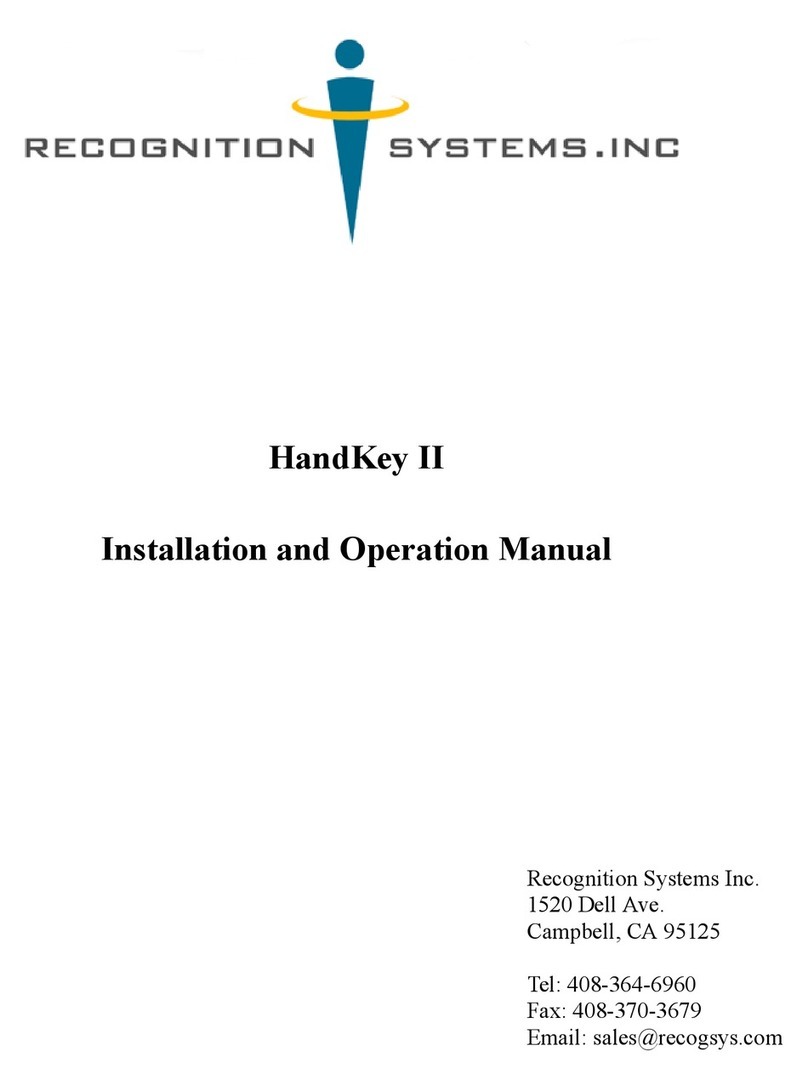
Recognition Systems
Recognition Systems HandKey II Installation and operation manual
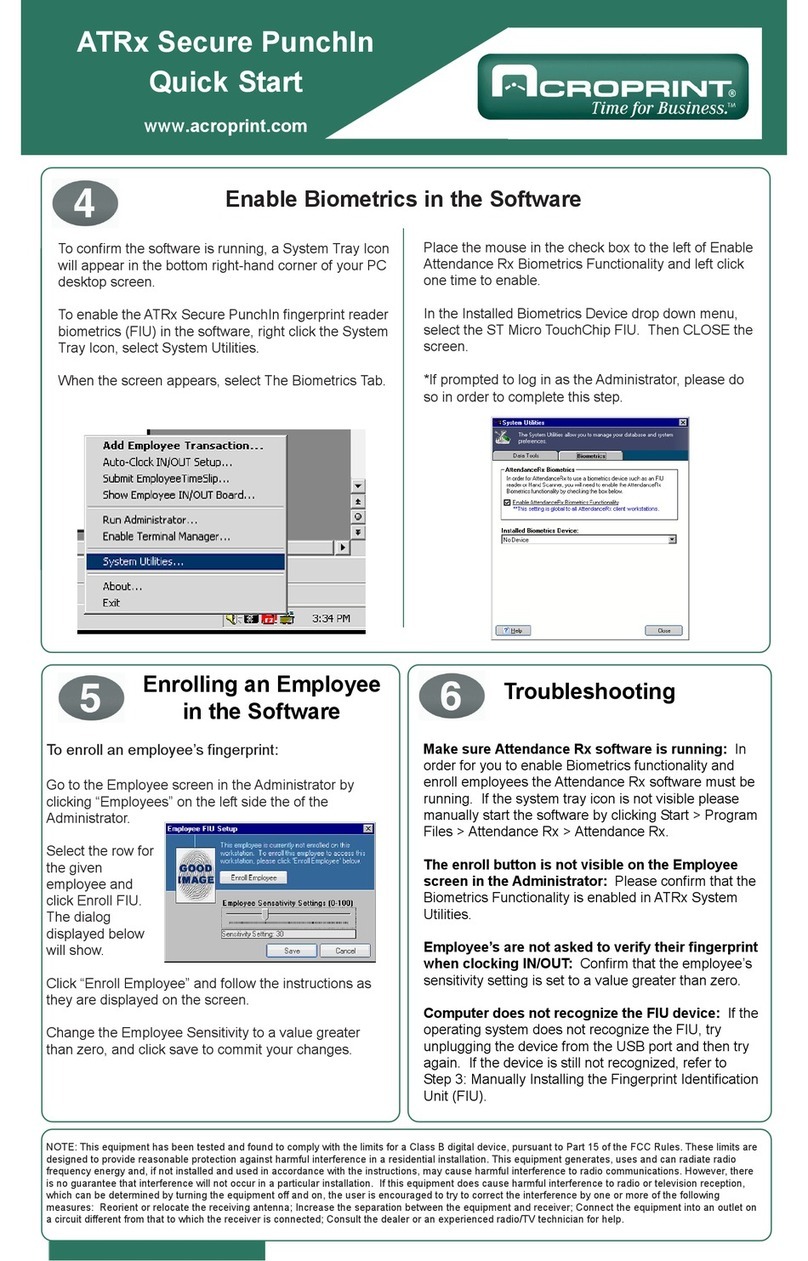
Acroprint
Acroprint ATRx Secure PunchIn quick start guide
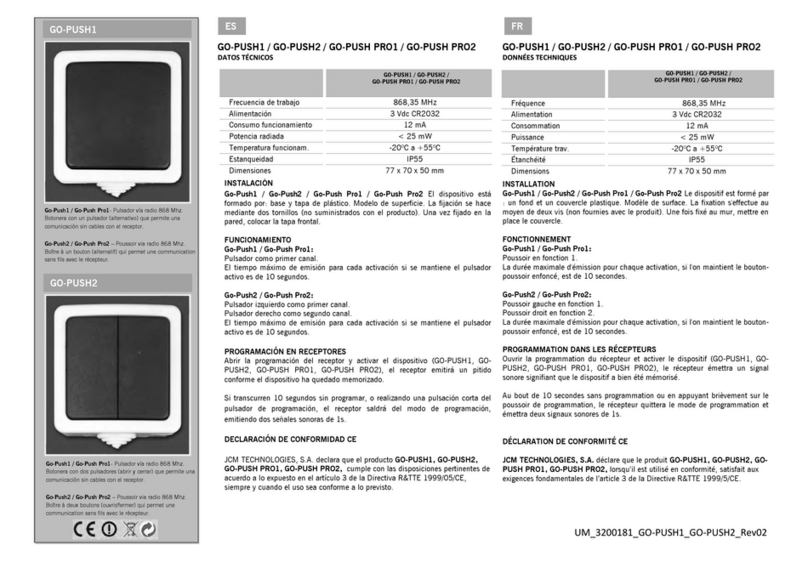
JCM Technologies
JCM Technologies GO-PUSH1 manual
